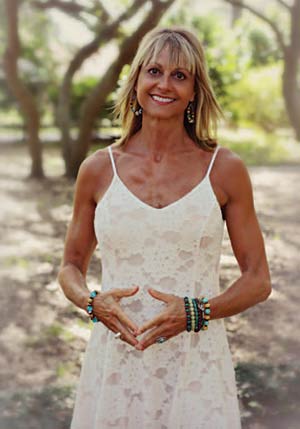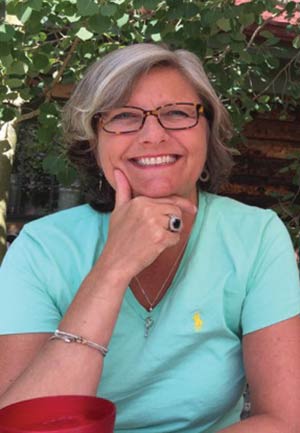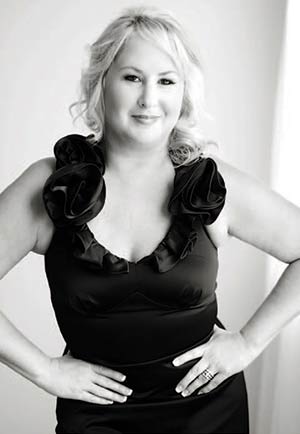
 There is no easy way to get the news. Breast cancer. It sucks the breath from your body. Your world stops turning as you try to comprehend the words your doctor is saying. What now?
There is no easy way to get the news. Breast cancer. It sucks the breath from your body. Your world stops turning as you try to comprehend the words your doctor is saying. What now?
Breast cancer is not just one disease. There are many variations multiplied by the individuality of each woman’s (or man’s) body. Medical science has made great strides in treating breast cancer, and doctors are saving more lives than ever. Although the incidence of breast cancer has dropped during the last decade or so, nearly 250,000 women and men will be diagnosed this year. Approximately 2.8 million women – both survivors and those currently undergoing treatment – have added the chapter on this disease to their life stories.
SWEET STRENGTH
 Linda McDandel learned that she had ductal cancer in situ (DCIS) during an especially rough time in her life. She and her husband had just lost their home to foreclosure during the housing market crash. With their financial security gone, they moved to smaller rented quarters and made sacrifices. One was health insurance, so she skipped her mammogram for two years until she just had a feeling.
Linda McDandel learned that she had ductal cancer in situ (DCIS) during an especially rough time in her life. She and her husband had just lost their home to foreclosure during the housing market crash. With their financial security gone, they moved to smaller rented quarters and made sacrifices. One was health insurance, so she skipped her mammogram for two years until she just had a feeling.
“I couldn’t put my finger on it, but I knew something was not right. I am very in-tune with my body,” Linda said. “So I thought I better go get a mammogram and pay for it.”
The radiologist found a spot. After a biopsy confirmed the cancer diagnosis, a lumpectomy was performed and was rated a 0 on a scale of 0 to 5. Because it was hormone positive, Linda’s surgeon recommended radiation plus a five-year course of Tamoxiphen. Both treatments carry the risk of side effects, some very serious, so Linda opted against these, preferring to adjust her already healthy diet. She decided to forgo sugar, dairy, processed food and meat, choosing fresh foods and fish instead.
While Linda does not recommend refusing standard treatment, she felt it was right for her since her surgeon was able to remove all of the cancerous tissue. But she does urge breast cancer patients to ask questions, request second opinions and discuss options. Do the research into drugs and their side effects. Above all, she stresses the benefits of exercise and nutrition.
To help educate women, Linda has started Sweet Strength.
“I give people the tools needed to empower them to move with purpose during very challenging circumstances,” she said.
She has a lot of experience in that field: financial loss, serious illness and the death of the husband who supported her decisions. But her biggest challenge was not breast cancer.
“Nothing really compares to losing your husband.”
THE CHRISTMAS GIFT
 Deborah Tibbetts Greig, a former news director at a local television station, was inspired to make her mammogram appointment by the co-host of a national morning show. Amy Robach (who also worked at a local station early in her career) quite unexpectedly discovered that she had breast cancer when she had a mammogram on ABC’s “Good Morning America” in 2013.
Deborah Tibbetts Greig, a former news director at a local television station, was inspired to make her mammogram appointment by the co-host of a national morning show. Amy Robach (who also worked at a local station early in her career) quite unexpectedly discovered that she had breast cancer when she had a mammogram on ABC’s “Good Morning America” in 2013.
Deborah already had her doctor’s prescription for the mammogram but had not yet made the appointment. She made the call immediately and, during her appointment, it became clear that something was amiss.
“I knew they saw something,” Deborah said. “They had me wait, then took more pictures, then the ultrasound.”
The diagnosis was invasive ductal carcinoma. It is the most common type cancer, affecting about 80 percent of breast cancer patients. Because it starts in the milk ducts, there may no symptoms at all in the beginning. The next step was the sentinel node surgery, which examines the lymph nodes for signs that the tumor has spread.
Deborah’s cancer had not spread beyond the breast, so she opted for a double mastectomy. It was close to the holidays, and the only time the surgery could be scheduled was Christmas Eve. Her two surgeons told her they would work late that day so she would not have to wait. She was grateful but fretted about being in the hospital instead of being home to open gifts on Christmas morning with her two daughters, Danielle and Nicole.
“Honey,” the nurse told her, “your daughters will wake up on Christmas day knowing you don’t have cancer. That’s a gift.”
Deborah’s surgery went well, and she woke up to a surprise herself. Her college-age daughters had brought in a tree and decorated her room for Christmas.
“I didn’t need chemo or radiation,” Deborah said. “I was lucky. It was a good clean removal.”
Because her cancer was discovered during a routine mammogram, Deborah feels very strongly that women should be proactive.
“If a woman wants a yearly mammogram, she should have it.”
DOUBLE TROUBLE
 Kathleen Cornely thought she was good to go after a lumpectomy eight years ago. But during a routine mam-mogram in 2013, “They found a couple of spots.” After more testing, the spots were identified as two different types of breast cancer: lobular carcinoma in situ and invasive ductal carcinoma. Luckily, both cancers were caught early. They were both classified stage 1.
Kathleen Cornely thought she was good to go after a lumpectomy eight years ago. But during a routine mam-mogram in 2013, “They found a couple of spots.” After more testing, the spots were identified as two different types of breast cancer: lobular carcinoma in situ and invasive ductal carcinoma. Luckily, both cancers were caught early. They were both classified stage 1.
Lobular carcinoma in situ (LCIS) is a group of abnormal cells that are not yet classified as cancer but carry a high risk of developing into breast cancer. It’s uncommon and is primarily found in women between 40 and 50.
Invasive ductal carcinoma is a more urgent matter since it is cancer that has begun to spread. Kathleen opted for a double mastectomy to assure the best possible long-term outcome. It was followed by three months of chemotherapy –every three weeks at MUSC in Mount Pleasant– which was not as bad as she expected. She experienced weight loss, fatigue and loss of appetite, but, fortunately, no nausea.
“The worst part was losing my hair,” Kathleen said.
A positive person by nature, she was able to maintain a good attitude. It also clarified that time is finite and not to be wasted. She and her sister, who recently underwent treatment for ovarian cancer, made good on their promise to travel “sometime.” This past May, they went to Hawaii on a “sisters’ survivors” trip.
“It makes you feel your mortality,” Kathleen said. “Take nothing for granted.”
Her four children were “very supportive,” especially during the stressful weeks between the mammogram and the final diagnostic results.
“I truly felt lucky,” she said. “I said OK, what is the silver lining? It was caught early and I got new boobs!”
THE EMOTIONAL SIDE
 Cindy Eley had a brush with breast cancer in 2007 when a mammogram showed a few calcifications, but the real trouble showed up years later, on July 14, 2011, when her mammogram revealed calcifications in the left breast. The radiologist wanted more images, then an ultrasound. Cindy realized that the radiologist had seen something suspicious and, waiting for the technician in the ultrasound room, she was alone with her thoughts. The images were enough to require a biopsy at the Medical University of South Carolina.
Cindy Eley had a brush with breast cancer in 2007 when a mammogram showed a few calcifications, but the real trouble showed up years later, on July 14, 2011, when her mammogram revealed calcifications in the left breast. The radiologist wanted more images, then an ultrasound. Cindy realized that the radiologist had seen something suspicious and, waiting for the technician in the ultrasound room, she was alone with her thoughts. The images were enough to require a biopsy at the Medical University of South Carolina.
“They try to let you know within 48 hours,” Cindy said.
Luckily, she had a friend who told her within 24 hours that it was indeed breast cancer. The mother of a young son, Cindy began to worry about the future. She had a double mastectomy Aug. 29. She did not require chemotherapy but found that medication would be a part of her life for 10 years.
“I was on Tamoxifen but I had side effects,” she said. “I was not feeling well.”
Cindy is on Letrazole, a drug that is used for hormone-receptor-positive breast cancers, but said this drug, too, has side effects.
I have joint pain, brain fog and cognitive issues,” she said.
In spite of the emotional rollercoaster of the treatment, Cindy is grateful.
“It was stage 1 and it was caught early,” she said.
LIFE MATTERS
 “On April 9, 2015, I had an appointment for a mammogram,” Cara Fowler said. “That morning I felt a lump in the shower.”
“On April 9, 2015, I had an appointment for a mammogram,” Cara Fowler said. “That morning I felt a lump in the shower.”
It seemed just as well. Cara figured she’d have that checked out during her appointment, but she was told that would require a different appointment and one was made for the next morning.
“I turned to go, then stopped and asked ‘Do I need my husband with me?’”
The answer was yes. Her husband, meteorologist Rob Fowler, changed his plans to accompany her.
The next morning she learned that there was probable cancer. And so began the whirlwind. She had two biopsies, which confirmed the cancer diagnosis: triple negative invasive ductal carcinoma.
She decided to consult her friend and neighbor, Dr. Megan Baker, who was then a breast surgeon at the Medical University of South Carolina (She is now a Roper St. Francis Physician Partner) for help in navigating this new journey in her life.
Cara’s cancer was aggressive and too large for chemotherapy. Surgery was scheduled, and, just days after, she began the first of eight rounds of chemo, which included the dreaded “red devil” (Adriamycin). The chemo was followed by six weeks of radiation.
 Through it all, with careful planning, Cara was able to live her life during this journey. Dr. Baker understood the need to attend a graduation, to celebrate a wedding and to simply enjoy life with her family.
Through it all, with careful planning, Cara was able to live her life during this journey. Dr. Baker understood the need to attend a graduation, to celebrate a wedding and to simply enjoy life with her family.
The stories are many, and one leads to another through the unique sisterhood of breast cancer survivors. As I write these words, I’m thinking of my friends. Sybil Blanton, who found a lump while taking a shower, has remained steadfast and positive after hearing that she had triple negative cancer. Unlike more common cancers, this one does not respond to newer treatments. She has undergone months of chemotherapy, followed by surgery. And to make sure the cancer is gone, there were weeks of radiation.
And Betsi Green who, after 19 cancer-free years, is staring down an old foe with a different face. Cured of the rare Paget’s disease, which attacks the nipple, she now has “no tumor, but a lot of loose cells marching to the lymph nodes.” She has just begun chemo and lost her hair. Next are multiple surgeries and radiation. In all, her treatment will span 18 months. She’s a little anxious but always positive and surrounded in love from family and friends. “I’m still soaring,” she said.
By Barbara Millen Patrick